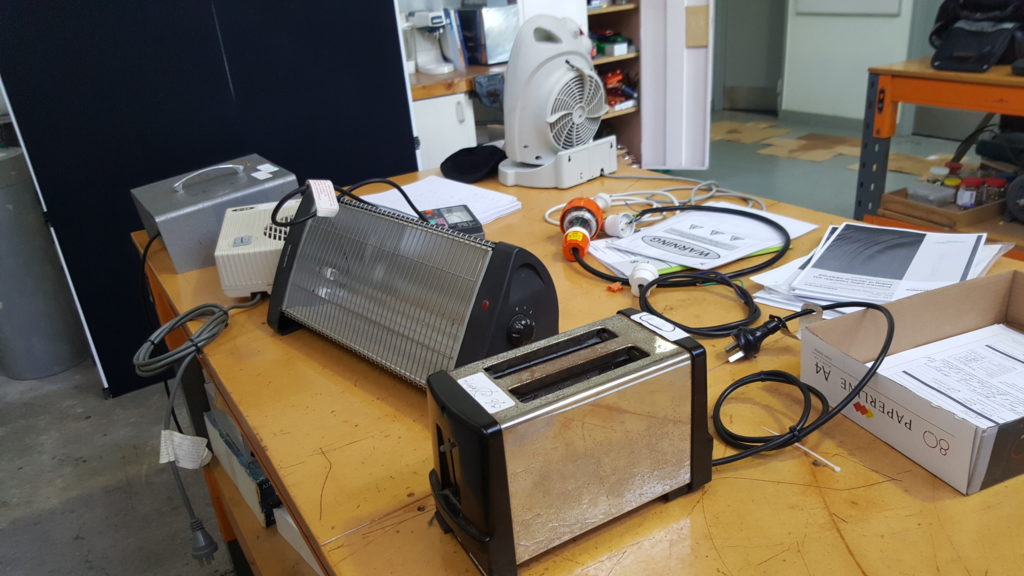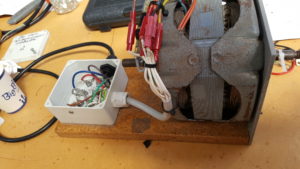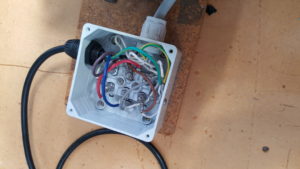Spent the morning testing 4 appliances. 3 heaters and a toaster. The toaster had the earth disconnected on purpose to see if we could find the fault. This gave us practice of going through AS/NZS 3760 of appliance testing and knowing off the top of our heads
- Visual
- Earth
- Insulation Resistance
- Polarity

Key points to note are class I are earthed appliances and class II are double insulated. The name plate was also important and is the first thing we should observe. This will tell us the input voltage, ie the suitability and if it is double insulated or not. We had to record our results and for test such as polarity we are not expected to open up the appliance so marked it as NA.
Afterwards, we wired up a single phase and 3 phase cord. We then had to test it according to the above as well.
Next we had to test 2 cords which had defects. Cord 1 failed the insulation resistance test and there was a short between N – E.
Cord 2 failed because the earth was open and the P & N were transposed.
The last thing we did for the day was to wire up a single phase induction motor. The first thing we did was to test and also to treat the motor just like any other appliance. The motor had a start winding and a run winding to account for start up current. The start winding always has a higher resistance to control the current and the run winding lower resistance.
Insulation test was done between each of the phases and also to P – Earth.


We then had to reverse the motor by swapping the polarity of only 1 winding, not phase and neutral.
TIPS:
Some helpful tips included:
- Leaving a pig tail on the main earth conductor (providing slack) in case someone trips over it.
- The copper in the main earth should come up the clamp and then back into the center where the stake is to lie to maintain maximum contact.
- If there are no double screws on the earth bus bar, feed the main earth up through one hole and back down another.
- MEM can be a conductor wire of suitable size. ie it doesn’t have to be a copper link.
- When wiring a plug, make the earth conductor longer so it is the last to break if pulled.
- Always check the batteries of the insulation resistance meter.
- Instead of using pliers to twist cables, strip part way, bend insulation 90 degrees and then use that to twist the copper conductors together.